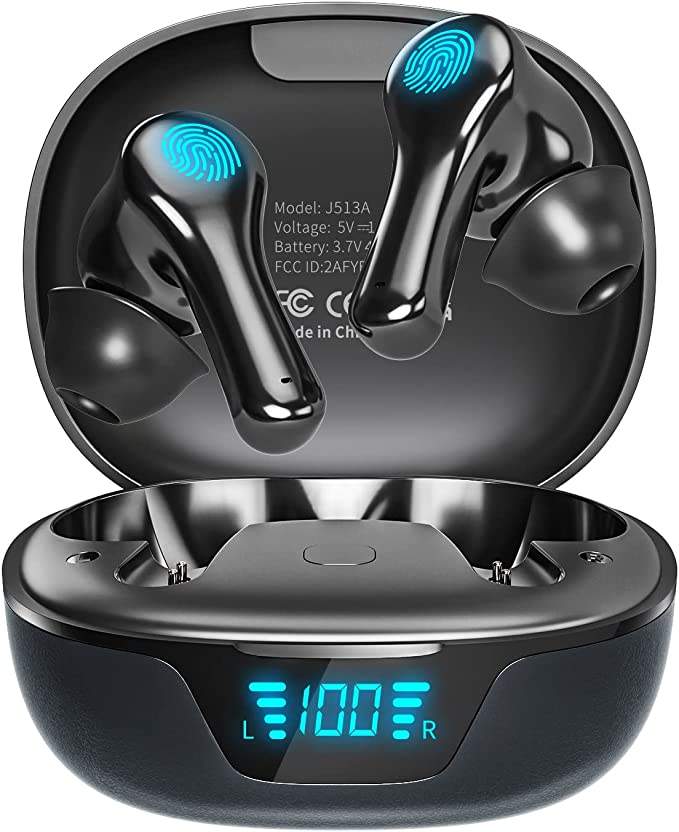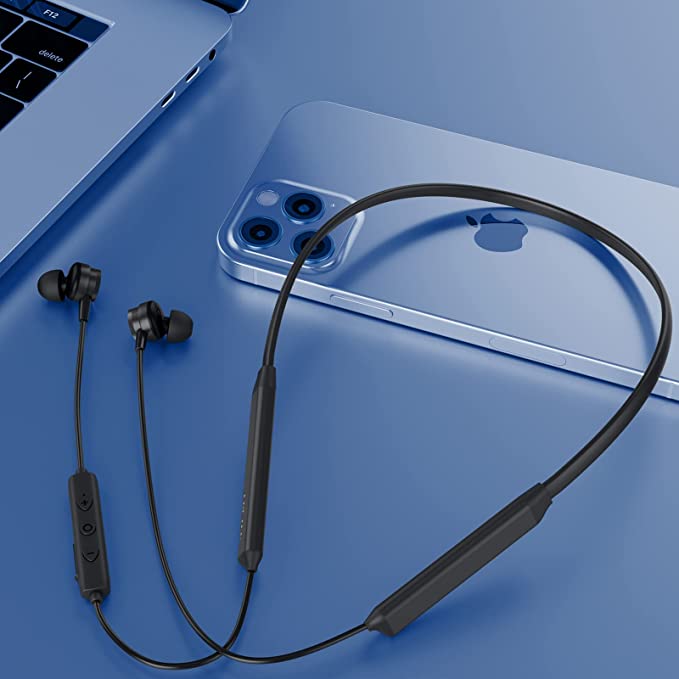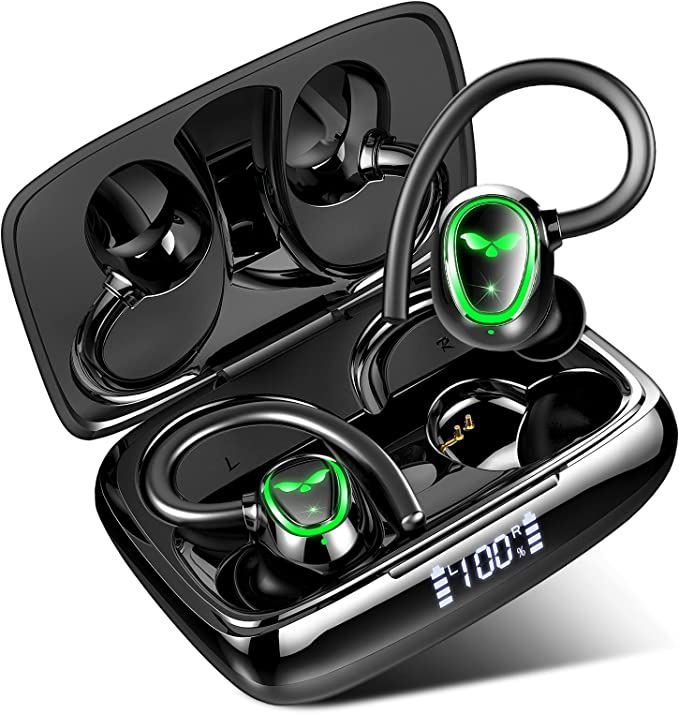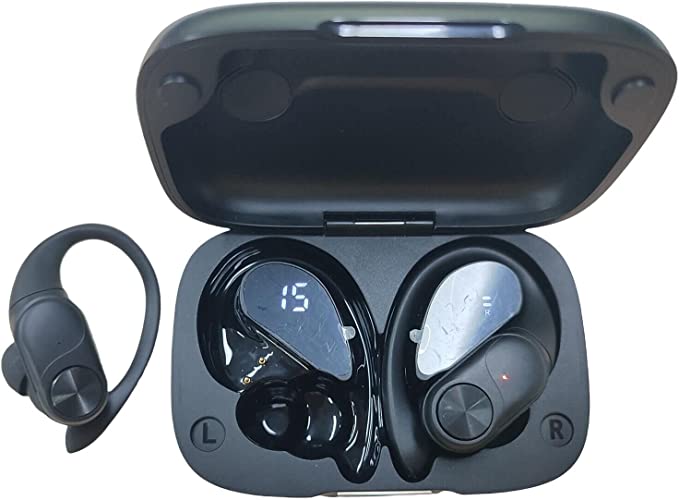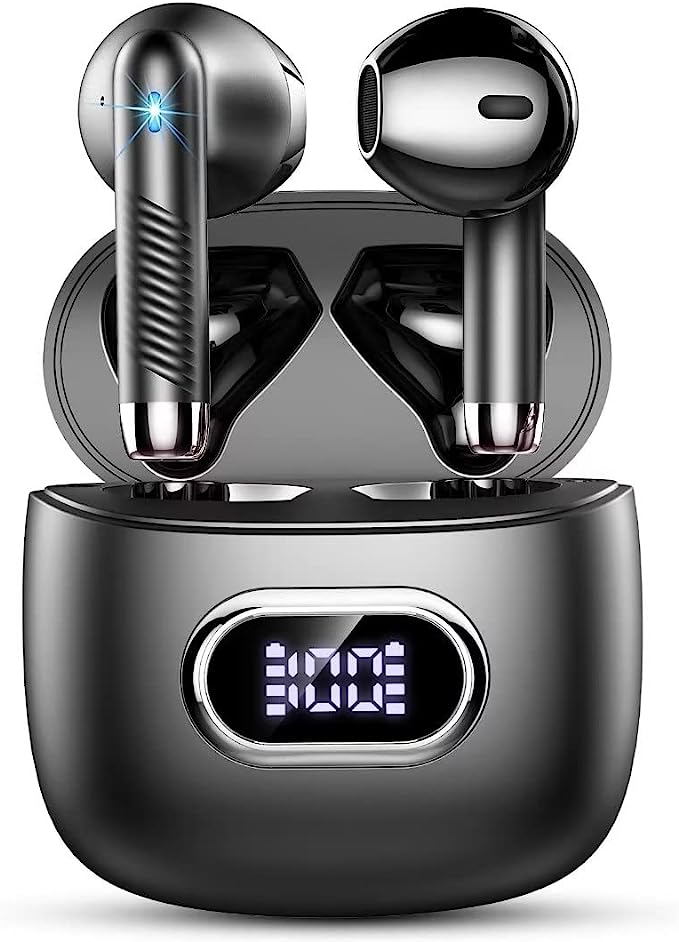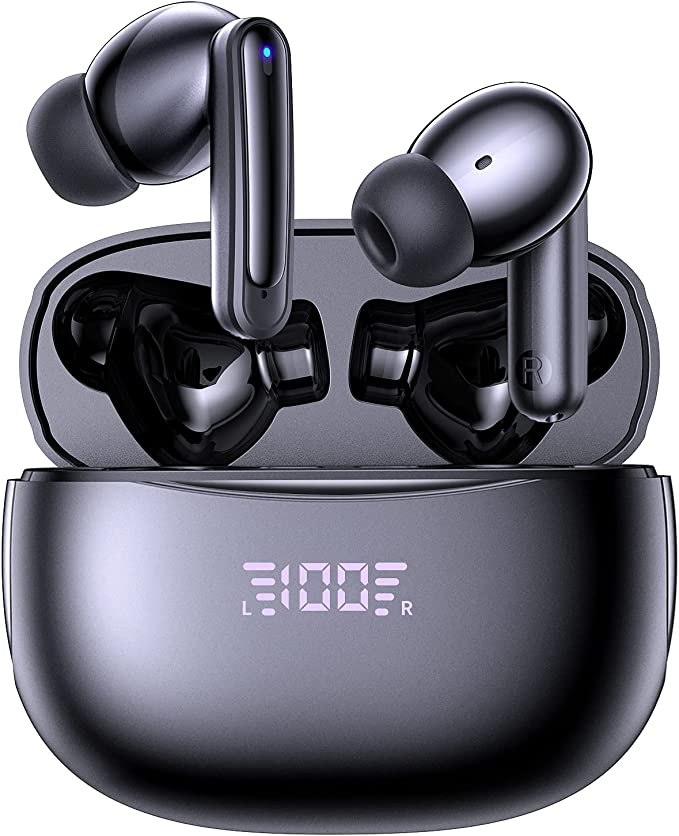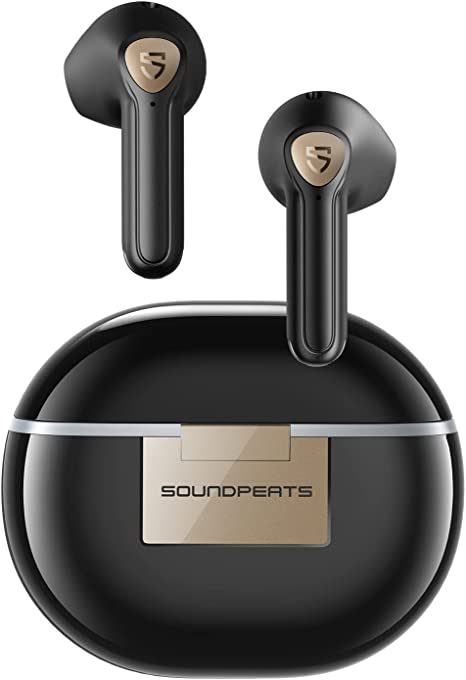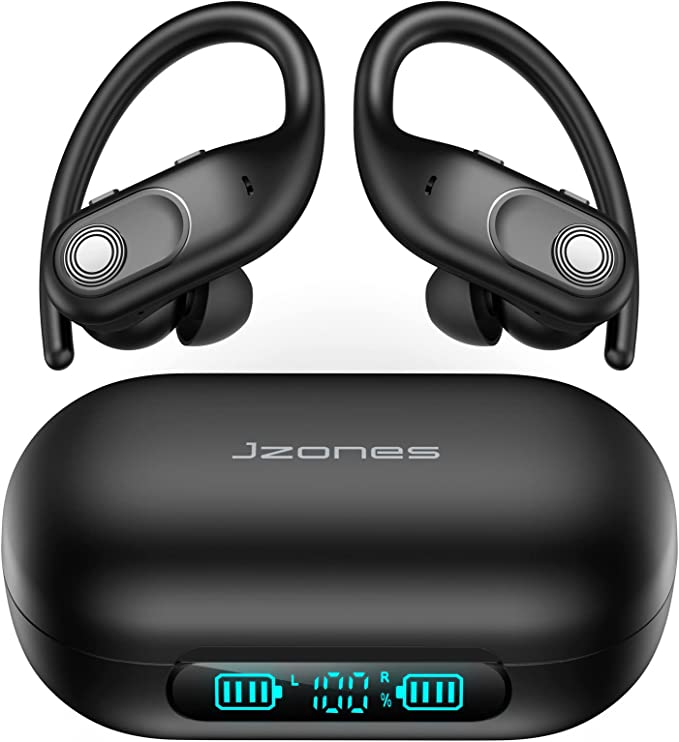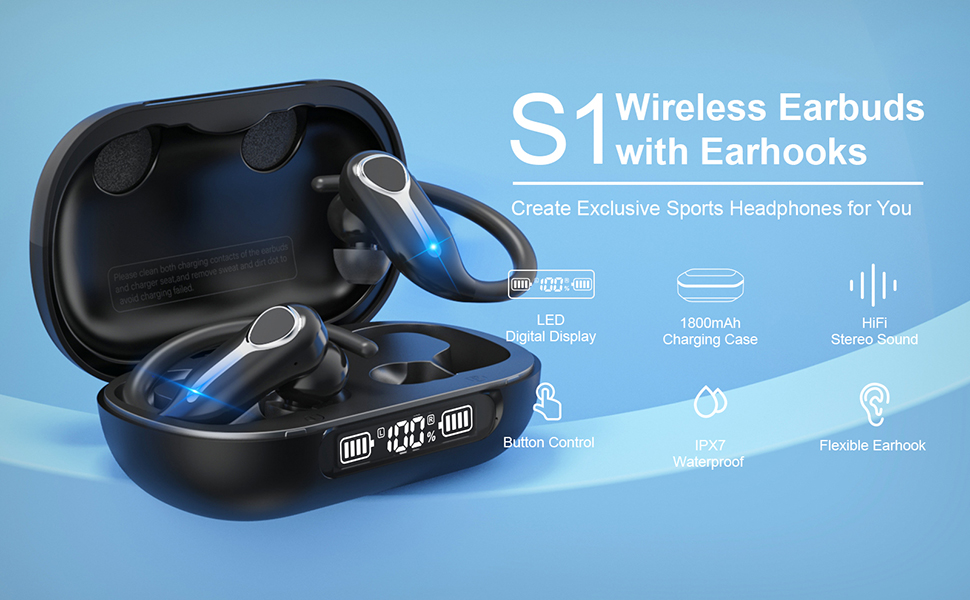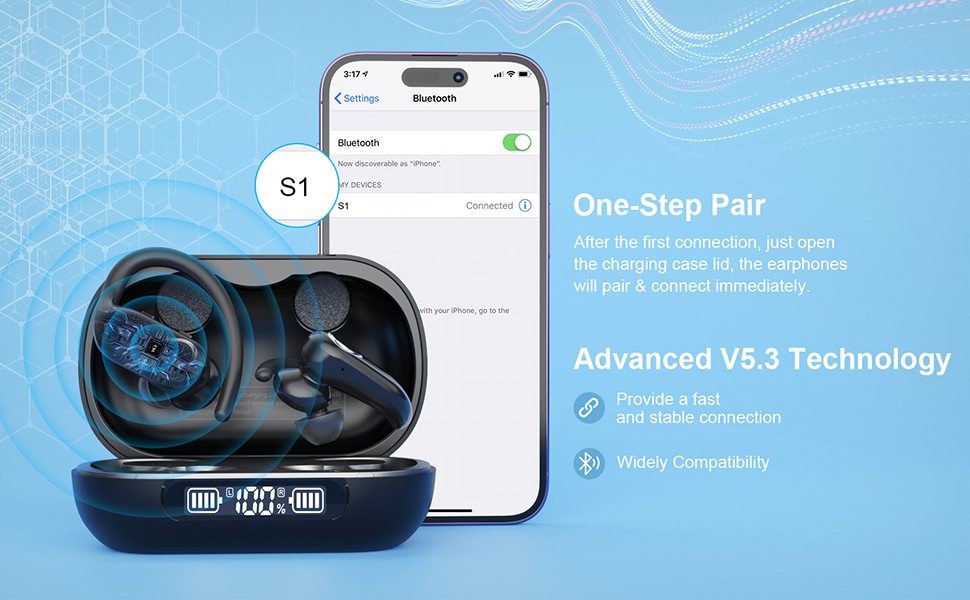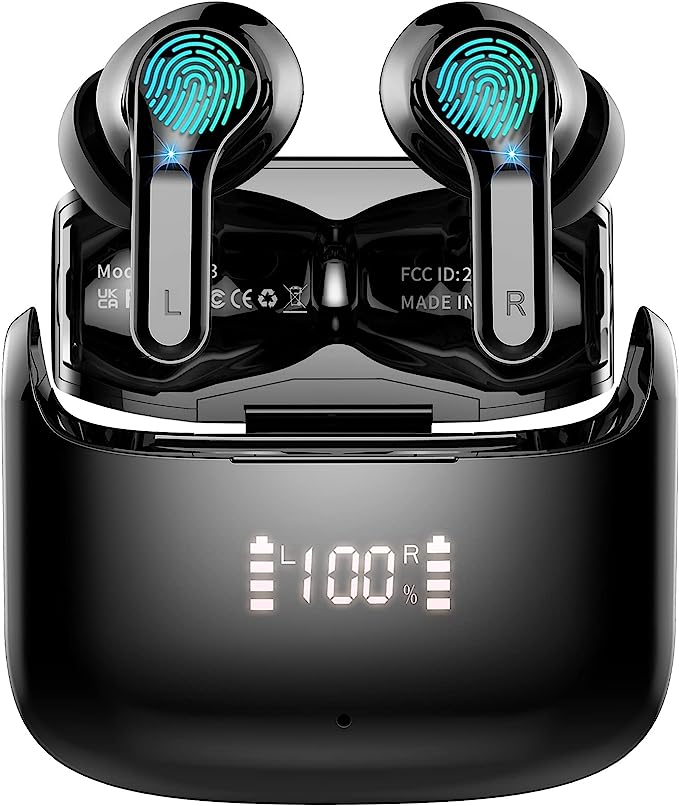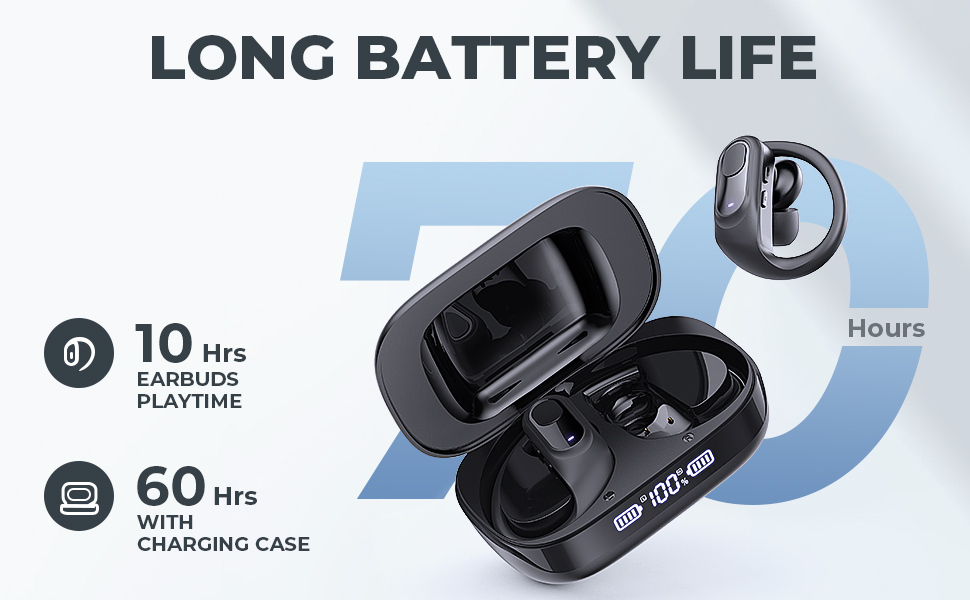GIEC Z2001 UniAir Earbuds: Mini Wireless Buds with Big Sound
Update on June 25, 2025, 7:39 a.m.
In our bustling, always-on world, the ability to curate our personal soundscape has transformed from a luxury to a near necessity. We crave immersive music during a workout, crystal-clear calls on a busy street, or simply a pocket of tranquility amidst the daily cacophony. This desire has fueled a remarkable evolution in audio technology, shrinking what once required bulky over-ear cans into a pair of astonishingly tiny wireless earbuds. The GIEC Z2001 UniAir Mini Wireless Earbuds, with their promise of “Big Bass Noise Cancelling Headphones” and a host of modern features at an accessible price point, are a fascinating example of this technological convergence. But how exactly do these diminutive devices pack such a punch? Let’s peel back the layers and explore the science that makes your sound, your sanctuary, truly unplugged.

At the forefront of the Z2001 UniAir’s appeal is “Hybrid Active Noise Cancellation,” a feature that aims to reduce ambient sound by a claimed 90%. To grasp this seemingly magical feat, picture sound as invisible ripples on a pond. The drone of a train, the hum of an office air conditioner, the chatter in a café – these are all sound waves. Active Noise Cancellation (ANC) doesn’t just block these waves like a physical barrier (that’s passive noise isolation, which well-fitting ear tips help with). Instead, it wages a more sophisticated war. “Hybrid” ANC, as featured here, typically employs a duo of microphones on each earbud. One microphone, facing outward (feedforward), listens to the world around you, identifying the offending noise waves. Another microphone, facing inward towards your ear canal (feedback), monitors what you’re actually hearing, including any noise that might have slipped past or been generated by the earbud itself.
Both sets of information are fed to a tiny chip within the earbud. This chip, in a fraction of a second, generates a new sound wave that is precisely the opposite – an “anti-noise” wave, perfectly out of phase with the incoming clamor. Think of it like this: if an ocean wave (the noise) is a crest, the anti-noise wave is a trough of equal size. When these two meet, they cancel each other out through a phenomenon called destructive interference. The result? A significant reduction in perceived background noise, allowing you to “enjoy clear calls” or sink deeper into your music. While the “90% reduction” is an optimistic marketing figure highly dependent on the type and frequency of noise, effective ANC, especially against constant, low-frequency sounds like engine rumbles, can indeed create a remarkable “bubble of tranquility.” It’s important to remember, though, that ANC is less effective against sudden, sharp, or high-frequency sounds – your chatty colleague might still break through, albeit a bit muffled.
The invisible tether binding these earbuds to your phone or laptop is, of course, Bluetooth. The GIEC Z2001 UniAir boasts “Bluetooth 5.3,” the latest iteration of this ubiquitous wireless standard. If you remember the early days of Bluetooth – clunky pairing, occasional dropouts – you’ll appreciate how far it has come. Each version brings improvements, and Bluetooth 5.3, as defined by the Bluetooth Special Interest Group (SIG), offers tangible benefits. For these earbuds, it translates to a more stable and often faster connection to your device, minimizing those frustrating audio stutters within its stated “33 feet” (approximately 10 meters) wireless range in an open environment.
Furthermore, Bluetooth 5.3 is designed for greater power efficiency. This means the tiny batteries in the earbuds can last longer on a single charge, a crucial factor for all-day use. It also plays a role in reducing latency – the delay between when your device sends an audio signal and when you actually hear it. This is particularly vital for watching videos, ensuring dialogue matches lip movements, or for the “Game” mode offered by the Z2001, where even a slight audio lag can be the difference between virtual victory and defeat. The underlying magic of Bluetooth involves a technique called Frequency-Hopping Spread Spectrum (FHSS). The earbuds and your device rapidly “hop” between dozens of different radio frequencies many times per second, making the connection robust against interference and more secure. And once you’ve gone through the initial pairing, the “auto pair” feature means they should seamlessly reconnect when you next pop them out of their case. For audio transmission, these earbuds will at a minimum support the standard SBC (Subband Codec), and likely AAC (Advanced Audio Coding) for better compatibility and sound quality with Apple devices, though the product page doesn’t explicitly state the supported codecs beyond general compatibility.

Now, let’s talk about the heart of the sound: the “8mm triple layer driver.” A driver is essentially a miniature loudspeaker. Inside each Z2001 earbud, this 8mm component is responsible for converting electrical audio signals into the physical vibrations that your eardrums perceive as sound. It does this using the principles of electromagnetism: an electrical current (the audio signal) flows through a voice coil attached to a diaphragm (a thin, flexible membrane). This coil is nestled within a magnetic field. As the current fluctuates, it creates a changing magnetic force, causing the coil and diaphragm to vibrate rapidly, pushing and pulling air to create sound waves.
The “8mm” refers to the diaphragm’s diameter. While not huge, it’s a common and effective size for earbuds, capable of moving enough air to produce satisfying bass – hence the “Big Bass” claim. The “triple layer” aspect of the diaphragm is where material science comes into play. Though GIEC doesn’t specify the exact materials, multi-layer diaphragms are often engineered to combine different properties: perhaps one layer for stiffness (to accurately reproduce high frequencies or “super treble”), another for lightness and responsiveness (for quick transients), and a third for damping (to control unwanted resonances and ensure clarity). The goal of such a design is to achieve a balanced and detailed sound across the audible spectrum, aspiring to that “HIFI-level stereo sound” – “Hi-Fi” or High Fidelity simply meaning the faithful reproduction of the original audio recording.

Beyond the core audio and connection tech, the GIEC Z2001 UniAir earbuds are engineered with daily life in mind. Each earbud weighs a mere “0.12oz” (around 3.4 grams). This featherlight design is crucial for comfort during extended listening sessions – you might even forget you’re wearing them, making them “suitable for sleep or hidden in your hair.” Complementing this is the “ergonomic and ear-fit design,” along with the provision of S/M/L silicone ear-tips. Finding the right fit isn’t just about comfort; it’s vital for creating a good seal in your ear canal. This seal enhances passive noise isolation (blocking outside sound physically) and ensures the driver can deliver its full bass potential directly to your eardrum.
For those with an active lifestyle, or simply prone to getting caught in unpredictable weather, the “IPX5 Waterproof” rating offers peace of mind. The IP code, or Ingress Protection rating, is an international standard (IEC 60529). The ‘X’ in IPX5 means the earbuds haven’t been specifically rated for dust ingress, while the ‘5’ signifies protection against low-pressure water jets from any direction. In practical terms, this means they can handle sweat during an intense workout or a light rain shower without damage. However, it’s crucial to understand that IPX5 does not mean they are waterproof enough to be submerged in water, so no swimming with these.
Powering these tiny tech marvels is a combination of small batteries in the earbuds (25 mAh each, as per specifications) and a larger one in the charging case (400 mAh). GIEC claims “6H on single charging” for each earbud. With the charging case providing approximately “4 times full charging for both mini earbuds,” you’re looking at around 24 hours of total playtime if you’re using both earbuds together. The intriguing “48H playtime for single earbud take turns” is achieved by using one earbud while its partner charges in the case, and then swapping them – a clever way to extend listening if you’re content with mono audio for long stretches. The case itself recharges via a modern Type-C port in a respectable “1.5-2Hrs.”
Interacting with the Z2001 UniAir is done through “Smart Touch Control.” These touch-sensitive areas on the earbuds likely use capacitive sensing – your fingertip, being conductive, alters a tiny electrical field on the earbud’s surface, registering as a tap. This allows for a range of functions like Play/Pause, managing calls (Answer/Hang Up/Reject), skipping tracks, adjusting volume, activating your phone’s Voice Assistant, and switching between Music and Game modes, all without needing to fumble for your phone. The ability to “support single or both earbuds work” adds to the versatility, letting you keep one ear free for situational awareness when needed.

Ultimately, the GIEC Z2001 UniAir Mini Wireless Earbuds are a testament to how sophisticated audio technologies are becoming increasingly accessible. Features like Hybrid ANC, Bluetooth 5.3, and carefully designed drivers, once the preserve of high-end audio gear, are now found in devices priced as modestly as $19.99 (at the time of product data extraction, with a potential coupon). It’s this convergence of advanced science and thoughtful engineering that shrinks a world of immersive sound into a package small enough to slip into any pocket, ready to provide your personal soundtrack or a moment of quiet, wherever your day takes you. They represent not just a product, but a step in the ongoing journey to make our listening experiences richer, more convenient, and seamlessly integrated into our lives.




